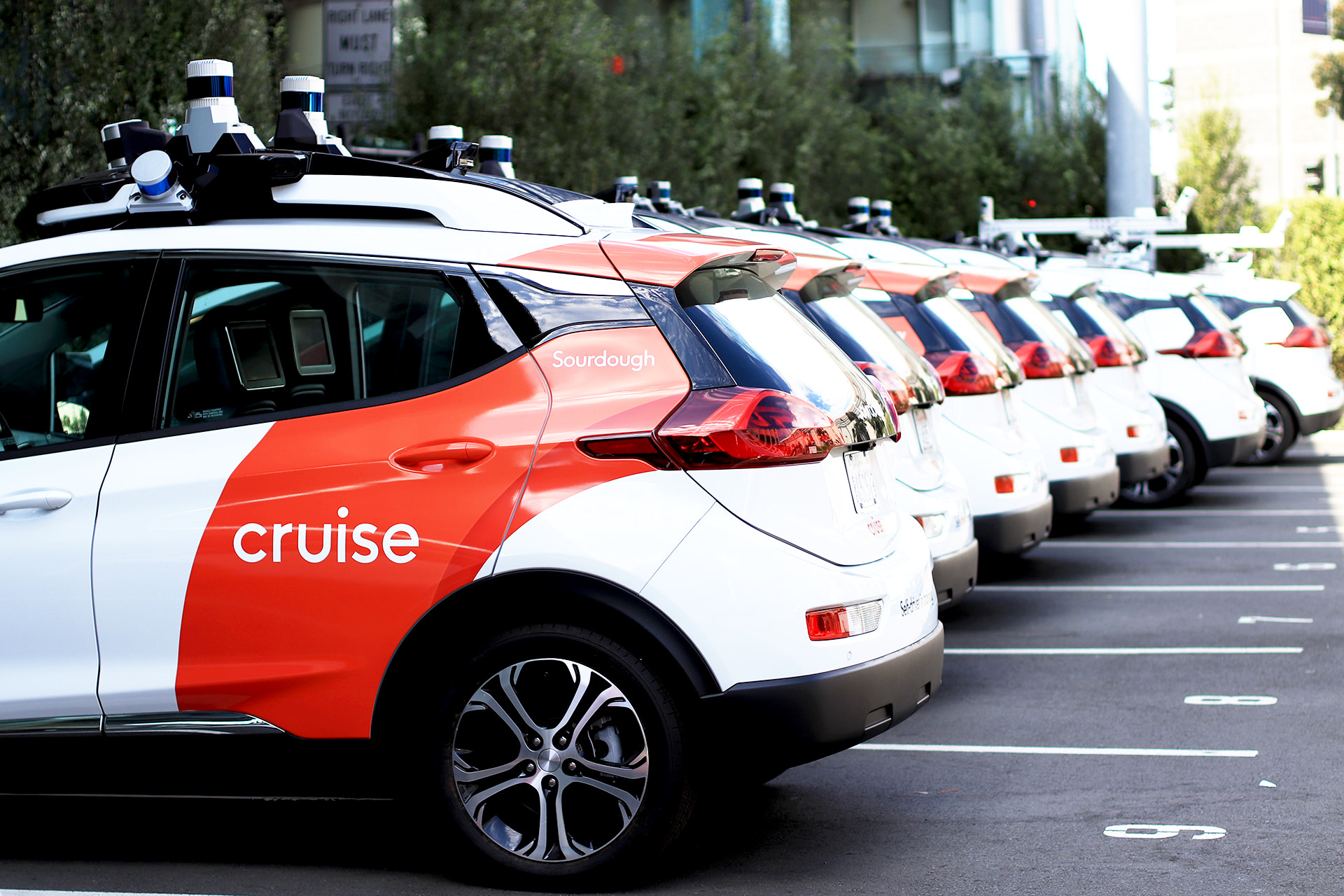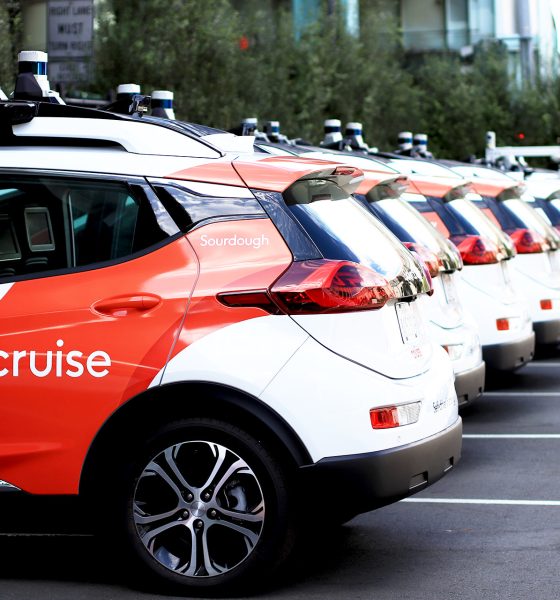General Motors (GM) is expected to announce significant spending cuts on its self-driving unit Cruise this week, following a series of bad news for the subsidiary after an incident with one of its robotaxis last month.
On Wednesday, GM will outline how much it plans to cut spending on the self-driving arm, according to Financial Times, after a Cruise robotaxi hit and pinned a woman in San Francisco on October 2. Since the accident, the company has slowly been whittling back certain planned operations, including production plans and the mere scope of what cities the startup will operate in.
Currently, GM has invested a quarterly average of around $700 million, though how much it plans to cut Cruise’s operations is not yet clear. The automaker has spent billions of dollars on the startup self-driving company, last year spending $2.1 billion to buy out Softbank’s minority stake in the company. GM also had a long-term revenue target of about $80 billion by 2030, though the announcement is also expected to affect this outlook.
Part of Cruise’s pitch has been based on a goal of “zero crashes, zero emissions, zero congestion,” though it has said it is currently focused on rebuilding public trust.
GM recently said its “strategy is to relaunch in one city and prove our performance there, before expanding… [once] we have taken steps to improve our safety culture and rebuild trust.”
GM-owned Cruise hires law, tech firms to review accident response
In addition to cutting spending, Cruise has announced multiple delays to the production of its Origin self-driving van, resignations from two separate co-founders and executives, recalls of its 950 Chevy Bolt self-driving vehicles and more. Following the incident, Cruise’s self-driving permit was immediately revoked by the California Department of Motor Vehicles (DMV), and the company faces a federal investigation from the National Highway Traffic Safety Administration (NHTSA).
A letter was sent to the NHTSA that had been signed by 26 different transportation labor organizations, highlighting “grave safety concerns about the expanded testing and operation of automated driving system-equipped vehicles,” according to Transportation Trades Department chief of staff Matthew Colvin.
Some have questioned how the company’s finances will look in the wake of the incident, especially as it moves away from tangible returns that possible investors can justify investing in. Barclays auto analyst Dan Levy thinks will be front and center in the minds of investors keeping tabs on the announcements this week.
“The big question is to what extent ‘Zero Zero Zero’ also hinged on zero rates,” Levy said. “This has been a big theme this year in auto; everyone has had to step back from the euphoria.”
Along with being concerned about returns, GM investors are also hesitant about the startup’s safety following the accident, as expressed by some in the weeks since.
“The problem for Cruise as a business is GM is dependent on it for all the software [revenue] targets the company has set,” said one GM investor. “We don’t see a path to profit, but we do see they will burn a lot of cash trying. GM would be better placed winding back its bet, and returning the money to shareholders.”
“The public are also recognising that being unwitting guinea pigs to unproven tech that’s desperately underregulated is not what anybody has signed up for,” the investor added, noting that a move to reduce spending “as much as possible” at Cruise would constitute an “easy win.”
What are your thoughts? Let me know at zach@teslarati.com, find me on X at @zacharyvisconti, or send your tips to us at tips@teslarati.com.

Elon Musk
Elon Musk and Tesla AI Director share insights after empty driver seat Robotaxi rides
The executives’ unoccupied tests hint at the rapid progress of Tesla’s unsupervised Robotaxi efforts.

Tesla CEO Elon Musk and AI Director Ashok Elluswamy celebrated Christmas Eve by sharing personal experiences with Robotaxi vehicles that had no safety monitor or occupant in the driver’s seat. Musk described the system’s “perfect driving” around Austin, while Elluswamy posted video from the back seat, calling it “an amazing experience.”
The executives’ unoccupied tests hint at the rapid progress of Tesla’s unsupervised Robotaxi efforts.
Elon and Ashok’s firsthand Robotaxi insights
Prior to Musk and the Tesla AI Director’s posts, sightings of unmanned Teslas navigating public roads were widely shared on social media. One such vehicle was spotted in Austin, Texas, which Elon Musk acknowleged by stating that “Testing is underway with no occupants in the car.”
Based on his Christmas Eve post, Musk seemed to have tested an unmanned Tesla himself. “A Tesla with no safety monitor in the car and me sitting in the passenger seat took me all around Austin on Sunday with perfect driving,” Musk wrote in his post.
Elluswamy responded with a 2-minute video showing himself in the rear of an unmanned Tesla. The video featured the vehicle’s empty front seats, as well as its smooth handling through real-world traffic. He captioned his video with the words, “It’s an amazing experience!”
Towards Unsupervised operations
During an xAI Hackathon earlier this month, Elon Musk mentioned that Tesla owed be removing Safety Monitors from its Robotaxis in Austin in just three weeks. “Unsupervised is pretty much solved at this point. So there will be Tesla Robotaxis operating in Austin with no one in them. Not even anyone in the passenger seat in about three weeks,” he said. Musk echoed similar estimates at the 2025 Annual Shareholder Meeting and the Q3 2025 earnings call.
Considering the insights that were posted Musk and Elluswamy, it does appear that Tesla is working hard towards operating its Robotaxis with no safety monitors. This is quite impressive considering that the service was launched just earlier this year.
Elon Musk
Starlink passes 9 million active customers just weeks after hitting 8 million
The milestone highlights the accelerating growth of Starlink, which has now been adding over 20,000 new users per day.

SpaceX’s Starlink satellite internet service has continued its rapid global expansion, surpassing 9 million active customers just weeks after crossing the 8 million mark.
The milestone highlights the accelerating growth of Starlink, which has now been adding over 20,000 new users per day.
9 million customers
In a post on X, SpaceX stated that Starlink now serves over 9 million active users across 155 countries, territories, and markets. The company reached 8 million customers in early November, meaning it added roughly 1 million subscribers in under seven weeks, or about 21,275 new users on average per day.
“Starlink is connecting more than 9M active customers with high-speed internet across 155 countries, territories, and many other markets,” Starlink wrote in a post on its official X account. SpaceX President Gwynne Shotwell also celebrated the milestone on X. “A huge thank you to all of our customers and congrats to the Starlink team for such an incredible product,” she wrote.
That growth rate reflects both rising demand for broadband in underserved regions and Starlink’s expanding satellite constellation, which now includes more than 9,000 low-Earth-orbit satellites designed to deliver high-speed, low-latency internet worldwide.
Starlink’s momentum
Starlink’s momentum has been building up. SpaceX reported 4.6 million Starlink customers in December 2024, followed by 7 million by August 2025, and 8 million customers in November. Independent data also suggests Starlink usage is rising sharply, with Cloudflare reporting that global web traffic from Starlink users more than doubled in 2025, as noted in an Insider report.
Starlink’s momentum is increasingly tied to SpaceX’s broader financial outlook. Elon Musk has said the satellite network is “by far” the company’s largest revenue driver, and reports suggest SpaceX may be positioning itself for an initial public offering as soon as next year, with valuations estimated as high as $1.5 trillion. Musk has also suggested in the past that Starlink could have its own IPO in the future.
News
NVIDIA Director of Robotics: Tesla FSD v14 is the first AI to pass the “Physical Turing Test”
After testing FSD v14, Fan stated that his experience with FSD felt magical at first, but it soon started to feel like a routine.

NVIDIA Director of Robotics Jim Fan has praised Tesla’s Full Self-Driving (Supervised) v14 as the first AI to pass what he described as a “Physical Turing Test.”
After testing FSD v14, Fan stated that his experience with FSD felt magical at first, but it soon started to feel like a routine. And just like smartphones today, removing it now would “actively hurt.”
Jim Fan’s hands-on FSD v14 impressions
Fan, a leading researcher in embodied AI who is currently solving Physical AI at NVIDIA and spearheading the company’s Project GR00T initiative, noted that he actually was late to the Tesla game. He was, however, one of the first to try out FSD v14.
“I was very late to own a Tesla but among the earliest to try out FSD v14. It’s perhaps the first time I experience an AI that passes the Physical Turing Test: after a long day at work, you press a button, lay back, and couldn’t tell if a neural net or a human drove you home,” Fan wrote in a post on X.
Fan added: “Despite knowing exactly how robot learning works, I still find it magical watching the steering wheel turn by itself. First it feels surreal, next it becomes routine. Then, like the smartphone, taking it away actively hurts. This is how humanity gets rewired and glued to god-like technologies.”
The Physical Turing Test
The original Turing Test was conceived by Alan Turing in 1950, and it was aimed at determining if a machine could exhibit behavior that is equivalent to or indistinguishable from a human. By focusing on text-based conversations, the original Turing Test set a high bar for natural language processing and machine learning.
This test has been passed by today’s large language models. However, the capability to converse in a humanlike manner is a completely different challenge from performing real-world problem-solving or physical interactions. Thus, Fan introduced the Physical Turing Test, which challenges AI systems to demonstrate intelligence through physical actions.
Based on Fan’s comments, Tesla has demonstrated these intelligent physical actions with FSD v14. Elon Musk agreed with the NVIDIA executive, stating in a post on X that with FSD v14, “you can sense the sentience maturing.” Musk also praised Tesla AI, calling it the best “real-world AI” today.










